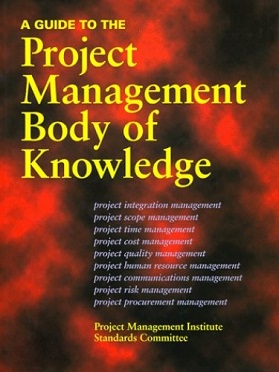Project management is the process of leading the work of a team to achieve all project goals within the given constraints. This information is usually described in project documentation, created at the beginning of the development process. The primary constraints are scope, time, and budget. The secondary challenge is to optimize the allocation of necessary inputs and apply them to meet pre-defined objectives.

A work-breakdown structure (WBS) in project management and systems engineering is a deliverable-oriented breakdown of a project into smaller components. A work breakdown structure is a key project management element that organizes the team's work into manageable sections. The Project Management Body of Knowledge defines the work-breakdown structure as a "hierarchical decomposition of the total scope of work to be carried out by the project team to accomplish the project objectives and create the required deliverables."
Construction engineering, also known as construction operations, is a professional subdiscipline of civil engineering that deals with the designing, planning, construction, and operations management of infrastructure such as roadways, tunnels, bridges, airports, railroads, facilities, buildings, dams, utilities and other projects. Construction engineers learn some of the design aspects similar to civil engineers as well as project management aspects.
A project plan, according to the Project Management Body of Knowledge (PMBOK), is: "...a formal, approved document used to guide both project execution and project control. The primary uses of the project plan are to document planning assumptions and decisions, facilitate communication among project stakeholders, and document approved scope, cost, and schedule baselines. A project plan may be sumarized or detailed."

The Project Management Body of Knowledge (PMBOK) is a set of standard terminology and guidelines for project management. The body of knowledge evolves over time and is presented in A Guide to the Project Management Body of Knowledge, a book whose seventh edition was released in 2021. This document results from work overseen by the Project Management Institute (PMI), which offers the CAPM and PMP certifications.

PRINCE2 is a structured project management method and practitioner certification programme. PRINCE2 emphasises dividing projects into manageable and controllable stages.
Scope creep in project management is continuous or uncontrolled growth in a project's scope, generally experienced after the project begins. This can occur when the scope of a project is not properly defined, documented, or controlled. It is generally considered harmful. It is related to but distinct from feature creep, because feature creep refers to features, and scope creep refers to the whole project.

Facilities engineering evolved from "plant engineering" in the early 1990s as U.S. workplaces became more specialized. Practitioners preferred this term because it more accurately reflected the multidisciplinary demands for specialized conditions in a wider variety of indoor environments, not merely manufacturing plants.
The Project Management Institute is a U.S.-based not-for-profit professional organization for project management.
Within quality management systems (QMS) and information technology (IT) systems, change control is a process—either formal or informal—used to ensure that changes to a product or system are introduced in a controlled and coordinated manner. It reduces the possibility that unnecessary changes will be introduced to a system without forethought, introducing faults into the system or undoing changes made by other users of software. The goals of a change control procedure usually include minimal disruption to services, reduction in back-out activities, and cost-effective utilization of resources involved in implementing change. According to the Project Management Institute, change control is a "process whereby modifications to documents, deliverables, or baselines associated with the project are identified, documented, approved, or rejected."
A general contractor, main contractor, prime contractor, builder (UK/AUS), or contractor is responsible for the day-to-day oversight of a construction site, management of vendors and trades, and the communication of information to all involved parties throughout the course of a building project. In the USA a builder may be a sole proprietor managing a project and performing labor or carpentry work, have a small staff, or may be a very large company managing billion dollar projects. Some builders build new homes, some are remodelers, some are developers.

A business analyst (BA) is a person who processes, interprets and documents business processes, products, services and software through analysis of data. The role of a business analyst is to ensure business efficiency increases through their knowledge of both IT and business function.
Project Management Professional (PMP) is an internationally recognized professional designation offered by the Project Management Institute (PMI). As of 31 July 2020, there are 1,036,368 active PMP-certified individuals and 314 chartered chapters across 214 countries and territories worldwide.
Construction management (CM) aims to control the quality of a project's scope, time, and cost to maximize the project owner's satisfaction. It uses project management techniques and software to oversee the planning, design, construction and closeout of a construction project safely, on time, on budget and within specifications.
Software project management is the process of planning and leading software projects. It is a sub-discipline of project management in which software projects are planned, implemented, monitored and controlled.
Asset management is a systematic approach to the governance and realization of all value for which a group or entity is responsible. It may apply both to tangible assets and to intangible assets. Asset management is a systematic process of developing, operating, maintaining, upgrading, and disposing of assets in the most cost-effective manner.
Cost engineering is "the engineering practice devoted to the management of project cost, involving such activities as estimating, cost control, cost forecasting, investment appraisal and risk analysis". "Cost Engineers budget, plan and monitor investment projects. They seek the optimum balance between cost, quality and time requirements."
A glossary of terms relating to project management and consulting.
Extreme project management (XPM) refers to a method of managing very complex and very uncertain projects.
The following outline is provided as an overview of and topical guide to project management:





